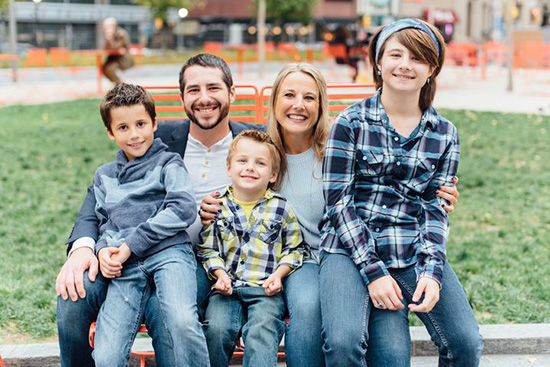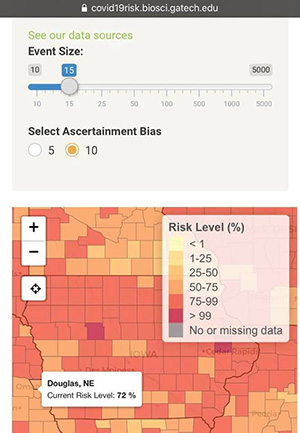
This is a personal Facebook post shared by Nebraska Medicine critical care physician Dustin Krutsinger, MD, to his friends and family. It is shared with permission from Dr. Krutsinger.
An easy tool to assess COVID-19 Thanksgiving risk.
Data scientists at Georgia Tech have developed a tool using the number of COVID-19 cases over the past 10 days in each county to allow people like you and me to assess how risky our plans may be.
I'll use my family's typical Thanksgiving plans as an example.
Absent COVID-19, we would all meet at my in-laws in Lucas County. In attendance would be:
- A family of five from Omaha (Douglas County), Nebraska
- A family of six from Warren County, Iowa
- And families of two and five from Lucas County, Iowa
Total of 18 people.
The tool allows only certain event sizes, so I will round down to 15.
If we were all from Douglas County, the percent chance at least one person at the table has an active COVID-19 infection would be 72%. If we were all from Warren County, 76%, and if we were all from Lucas County, 54%.
If we all gathered around the table, there is a 54 to 76% chance that one of us would have an active COVID-19 infection.
Now, we also must assess the risk factors of those sitting around the table. Factors associated with severe disease include:
- Diabetes
- Heart disease
- Kidney disease
- Chronic obstructive pulmonary disease (COPD)
- History of smoking
- Asthma
- High blood pressure
- Cancer
Over 50% of adult Americans have one or more of these risk factors. My family is similar, with at least half of us having at least one of these conditions.
A 54 to 76% chance someone brings COVID-19 to a table, where over half of us are high risk... that is too risky for me.
My family will not be visiting for Thanksgiving. We will sit this holiday out, so we can have everyone present for the next one.
Dustin Krutsinger, MD, MSCE
Critical Care Physician
Advanced Degree in Epidemiology
Omaha, Nebraska
Sources
- See detailed methods of how the risk calculator works
- Fact check my claim that 50% of adults have a risk factor






